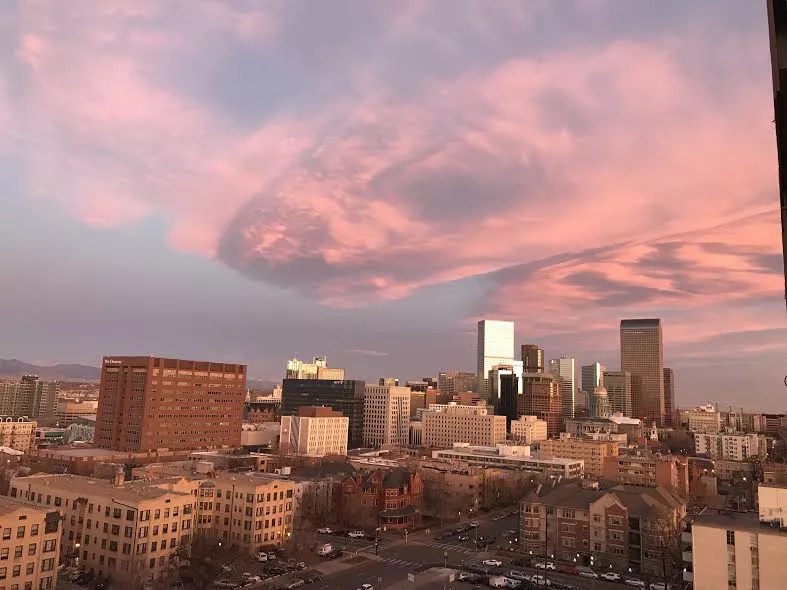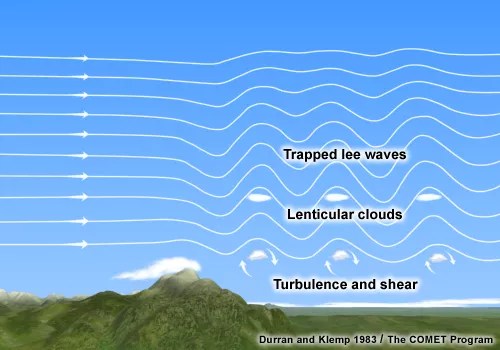
Chris Bianchi

Audio By Carbonatix
The old adage “a red sky at night is a sailor’s delight” has likely gotten more than its fair share of play lately, thanks to a recent string of stunning sunsets around town (that might seem like Mother Nature taunting the Broncos).
There are a couple of reasons that sunsets have been so beautiful, but a certain cloud has been especially helpful in setting Front Range skies on fire in recent weeks.
Since we’re lucky enough to live in the shadow of the Rockies, we see mountain wave clouds, also known as lenticular clouds, on a regular basis. These clouds are caused by stable air being forced up and over the mountains, creating turbulent bumps on the lee (downwind) side of the mountains, and it’s those bumps that create enough rising motion to cause mountain wave clouds. The mild weather we’ve experienced lately contributes to this type of cloud development.
Denver, make your New Year’s Resolution Count!
We’re $13,000 away from reaching our $50,000 year-end fundraising goal. Your support could be what pushes us over the top. If our work has kept you informed and connected this year, please consider making a contribution today.
Because these clouds are pretty high up, they comprise mostly ice. And like snow, ice reflects most of the light that reaches it (think about how blinding a walk through fresh snow can be); the reflection “scatters” light waves, which distorts colors. That scattering, at least in part, is what you see when skies turn a fiery orange or red.

The science behind mountain wave clouds.
COMET program
While mountain wave clouds can help make gorgeous sunsets that fill up your Facebook feed, they’re also notorious for creating air turbulence as a result of the bumpy wave-like motion that creates them. Flying into or out of Denver is often a bumpy venture, and these kinds of clouds are known to create sweaty palms for nervous fliers.
(As a forecaster myself, it’s also worth noting that they facilitate weather that is a pain to predict; a lot goes into the formation of mountain waves, and many of those ingredients are at the hyper-local level, making them especially difficult to gauge.)
Another reason for the spectacular sunsets is the time of year: Late fall/early winter is the best time for them. During the summer, heat and humidity during the day often create a layer of haze at or near the Earth’s surface, reducing air circulation and dissipating the scattering of light that often creates colorful sunsets.
Not every beautiful sunset can be attributed to mountain wave clouds. All sorts of clouds can produce them, and everything from volcanic eruptions to hail formation can influence them. If you’re interested in all of the dynamics that go into creating stunning sunrises or sunsets, this NOAA paper is a great start.

Mountain wave clouds over Denver on November 27.
Chris Bianchi
If you’re wondering whether or not you’re going to have a beautiful sunrise or sunset, consider a few things:
• Time of year
• The kinds of clouds that are in the sky. Mid- to high-level clouds (often feathery or wispy in appearance) usually create the best views.
• If you’re in Denver, are motionless, mid-level clouds hovering over you (see above photo)? That may mean you have mountain wave clouds overhead. Set up the tripod accordingly.
Happy unfiltered Instagramming!